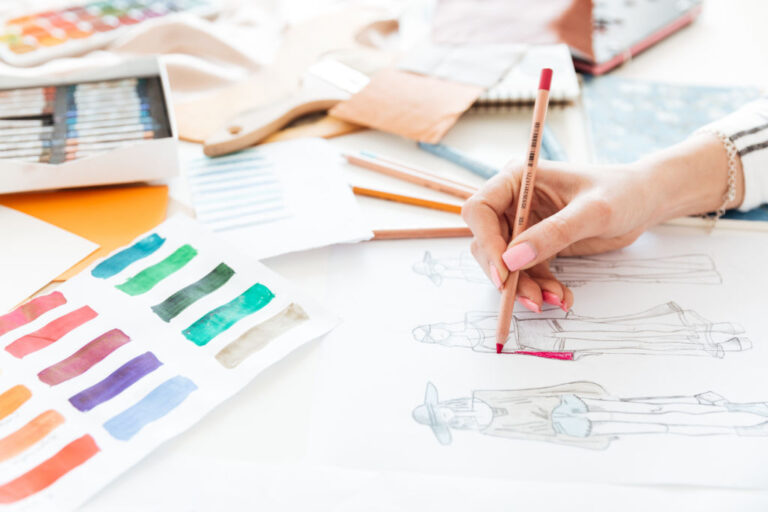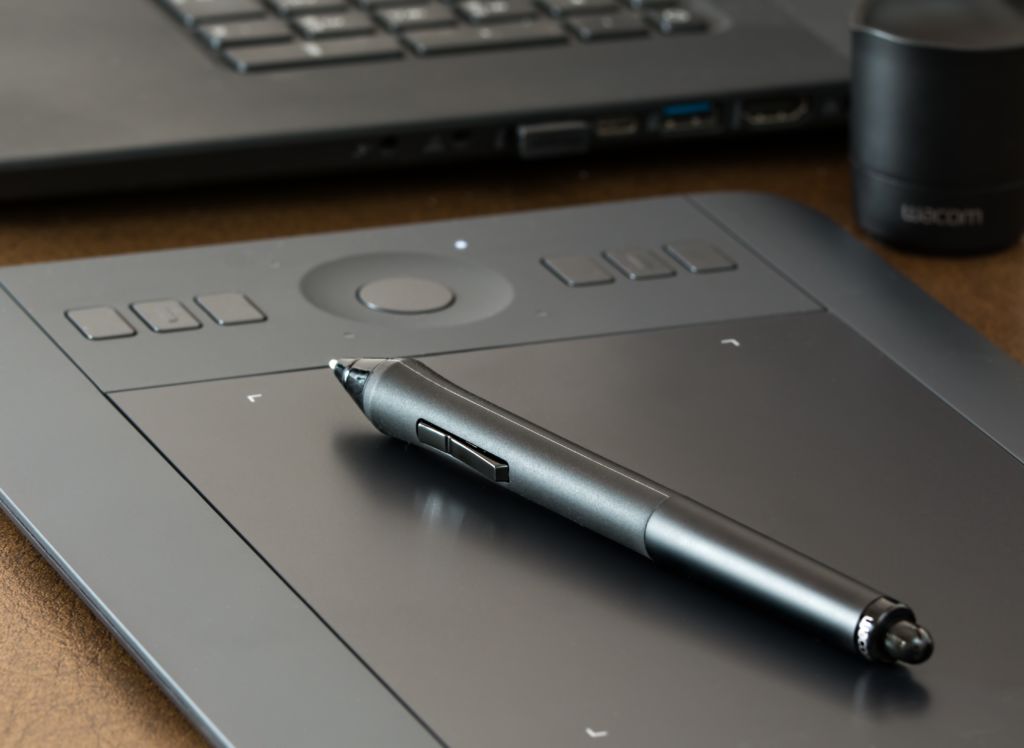
The linear economic model of “take, do, discard” is reaching its limits and natural resources are becoming increasingly scarce, threatening the growth of the fashion industry.
The public is increasingly aware of the environmental impacts of the fashion industry. Consumers expect the industry to address production-related issues such as the extensive use of water, toxic chemicals and garments that accumulate in landfills. The implementation of circularity offers an opportunity to evaluate and improve current business models as well as a unique chance to create a close relationship with consumers.
What is a circular fashion system?
A circular system restores and regenerates materials, in addition to providing opportunities to reduce environmental pressures and ease the demand for natural resources while ensuring future supply and capturing the value of a product to the greatest extent possible.
An essential part of creating a circular fashion system is to establish a collection building model, to integrate the circular design and to consider how to manage the final stage of the wear of garments. This can happen through practices that extend the use, e.g. resale, or by recycling worn garments and incorporating post-consumer recycled fibers into the production of new clothing items.
“It is essential that we take action on circularity today, even though we do not yet have all the solutions to create a circular fashion system. It is only through trials and attempts that we will find them. Morten Lehmann – Sustainability Director-Global Fashion Agenda.
Bringing together stakeholders from the entire fashion industry.
At the 2017 Copenhagen Fashion Summit, GFA asked fashion brands and retailers to sign a commitment to accelerate the transition to a circular fashion system. As of June 2018, 94 companies and corporations had signed the 2020 Circular Fashion System Commitment (hereafter 2020 Commitment), representing 12.5% of the global fashion market. The 2020 Commitment contains four action points for the signatories’ objectives:
Action Point 1: To implement design strategies for circularity | Action Point 2: To increase the volume of used garments and footwear collected | Action Point 3: To increase the volume of resale of second-hand garments and footwear | Action Point 4: To increase the volume of post-consumer recycled fibers in the production of new garments.
The Global Fashion Agenda toolboxes.
n the first year of the 2020 Commitment, GFA focused on industry-wide collaboration and knowledge sharing as the pillars of future progress. As a result, four toolboxes have been developed based on each action point.
The aim of the toolboxes is to provide key information, lessons learned and best practices from brands, organizations, companies and researchers to encourage and motivate fashion brands to close the circle. The focus is on finding ways to bring products back into the fashion system by redefining the life cycle of garments. Toolboxes point to external resources and guides that can provide additional information and useful tips.
The toolboxes represent a starting point for fashion brands and retailers looking to explore circularity within their company, while informing and inspiring key departments within the company, from management and design to marketing. They can also serve as an additional source of inspiration for those already taking action.
The four toolboxes are fully aligned with the 2020 Commitment targets and a tool box has been created for each of these action points. Although presented separately, they are intended to be used continuously and simultaneously, as all aspects of a circular strategy go hand in hand; it is equally important to align the design with the collection as with the management of the final part of the life cycle.
The four tool boxes are listed below and at the end of this article you can download the full contents of the first toolbox for free.
1. Circular design toolbox | 2. Used garment collection toolbox | 3. Used garment resale toolbox | 4. Textile recycling toolbox.
Tool Box #1: Circular Design.
What is the role of design in a circular fashion system?
Circular design is an unavoidable step in the creation of a circular fashion system that extends the life of products by reusing and recycling worn textiles. Using various approaches, circular design offers opportunities for better utilization of resources and materials, allowing companies to rethink products, processes and business models.
Key learnings.
- In a fully circular system, waste is obsolete because products and materials are linked indefinitely in technical or biological cycles.
- Circular design requires rethinking the way products are created and manufactured, but also rethinking the system of which they are a part.
- Circular design is an opportunity to break away from the traditional linear production model.
Diagram of the circular economy system.
A popular understanding of the circular economy is that the system contains a technosphere and a biosphere, with technical and biological cycles, through which products and materials can be returned to an earlier stage and reused.
Systemic thinking.
Circular design requires rethinking the way products are manufactured, but also the system they belong to. The interdependence between products and systems poses a challenge to circular design. For example, design for recyclability is currently very difficult because a system for recycling products on a commercial scale has not yet been developed. On the other hand, there is a need to create a demand across the industry for recycled fibers to involve relevant stakeholders in the creation of the system. As a result, it may be necessary to determine what is currently possible or consider what types of system changes are required to achieve the circular design ideas.
Business Models.
Within the circular economy, the traditional linear production model is challenged, and new business models are emerging that focus more on the thinking of the service system. This means that rent replaces ownership and service offering replaces product sales. An established business model does not change overnight, but circular business models can serve as inspiration to support new circular design practices.
Sustainable and circular design.
The purpose of sustainable design is to minimize the negative environmental and social impacts of a product throughout its value chain. Circular design focuses on extending the life of a product and reintroducing materials into the fashion system. Although approaches differ, sustainable design principles have yet to be applied in circular design.
“A circular economy is one that by design is restorative and regenerative” – Ellen Macarthur Foundation
How to get information and understand the circular design?
Designers play a vital role in determining the cycle of a product. If circularity is not integrated into the early stages of the design process, it is difficult for garments to re-circulate through the system. That’s why it’s time to train designers and product developers to create fashion garments and accessories using materials and techniques that promote circularity.
Key learnings.
- The circular design covers the durability, lifespan, repairability, disassembly and recyclability of a product.
- The objective of circular design is to expand the life cycle of a product and integrate existing materials continuously into the fashion system.
Circular design with various approaches.
Circular design can take many forms, depending on the purpose of the product. When designing for longevity, durability and repairability, the goal is to extend the wear phase of a garment by one or more owners. When designing for circularity, disassembly, recyclability or biodegradability, the aim is to ensure that products and materials are returned to the system and used in a regenerative process.
Consider the intended use.
The design approach for a product will depend on its specific function. The intended use of a product should guide its durability and circularity. Products designed for longevity require, for example, considering the durability of the chosen material. Biodegradability could be prioritized for garments with a short lifespan.
Choice of materials.
The choice of materials significantly influences the environmental impact of products. The choice of materials is also an essential part of the creation of circular products. Monofibers, for example, simplify the recycling process, while wool has a high durability. In this tool box there is a section on intelligent material choices.
Design practices that challenge circularity.
Both large and small fashion companies have become aware of circular design, but today’s design practices continue to challenge the creation of a circular fashion system in several ways:
- Designs that are not made to be repaired
- Sourcing of fabrics that are not suitable for circularity or fabrics with mixed fibers that are not recyclable.
- Designs that are difficult to disassemble and recycle.
- Lack of traceability of materials.
At the end of this article you can download this first toolbox: Circular Design Toolbox. And in the subsequent new posts, the three remaining toolboxes: Garment Collection Toolbox | Resale Toolbox | Textile Recycling Toolbox
Let’s move towards circular fashion!
Download the “Circular Design” report here
If you are already registered or want to join click here. Register / Login















































